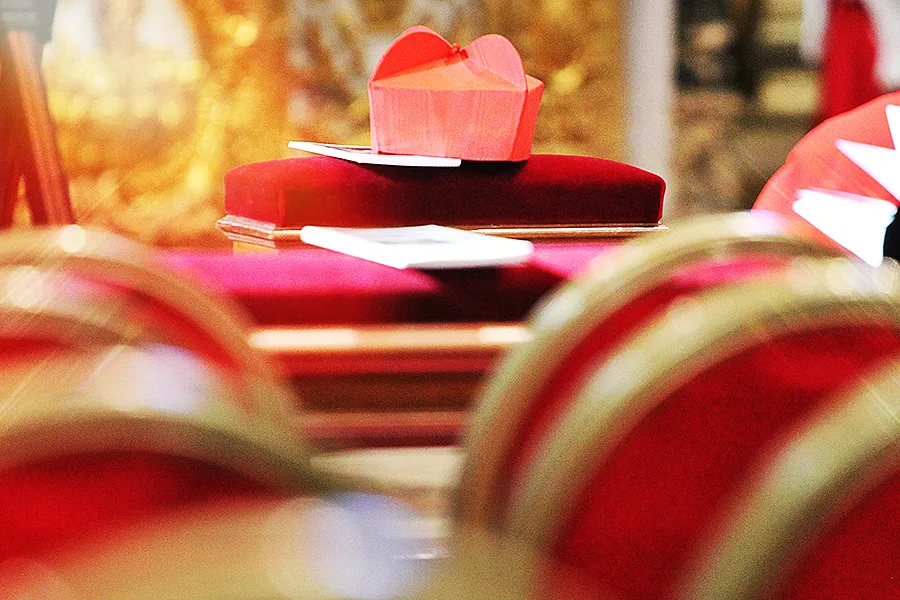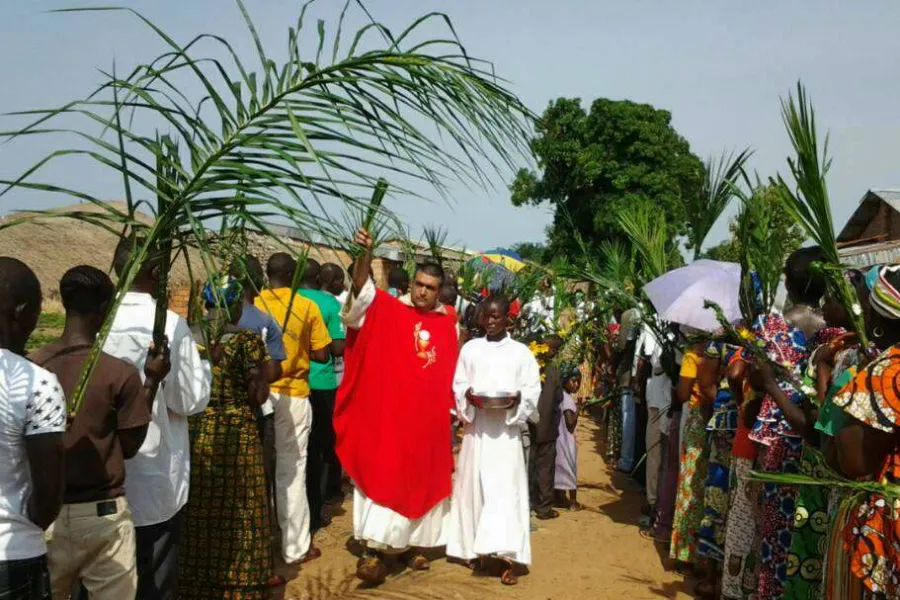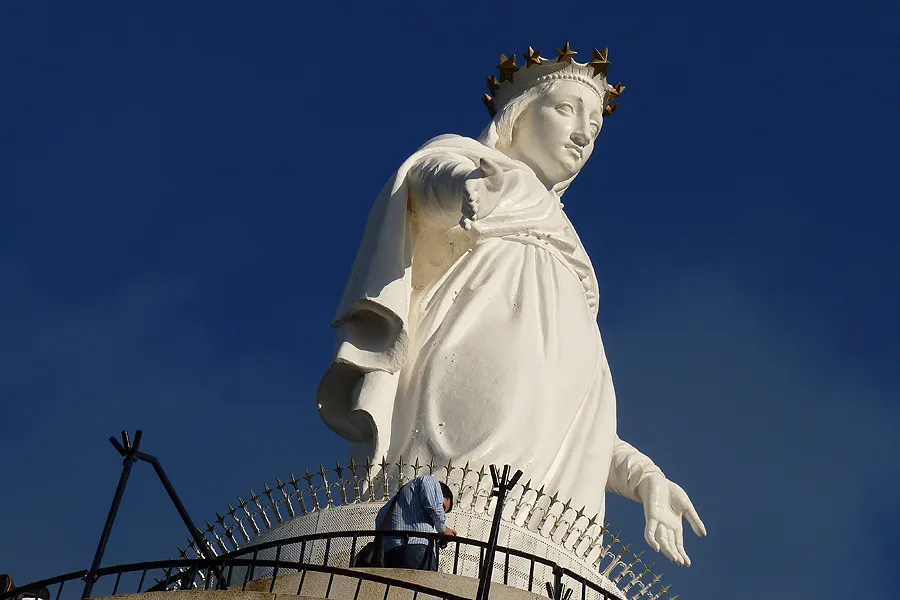
Vatican City, Oct 24, 2017 / 04:45 pm (CNA/EWTN News).- To understand the recent publication of a letter sent by Pope Francis to Cardinal Robert Sarah, it is helpful to understand the wider discussion into which it fits.
The letter was sent as a reaction to a commentary the cardinal wrote on the Pope’s motu proprio “Magnum Principium.”
With that motu proprio, issued this September, Pope Francis changed and amended those parts of the Code of Canon Law governing the translations of liturgical books into “vernacular languages.”
The document gave more flexibility to bishops’ conferences to propose and draft their translations, leaving to the Apostolic See to “confirm” their drafts.
At the time the motu proprio was issued, Archbishop Arthur Roche, Secretary of the Congregation for the Divine Worship and the Discipline of Sacraments, released an official commentary, explaining that “the confirmatio of the Apostolic See is not to be considered as an alternative intervention in the process of translation, but rather as an authoritative act by which the competent Dicastery ratifies the approval of the bishops.”
Roche’s commentary went on to say that, “obviously, this presupposes a positive evaluation of the fidelity and congruence of the texts produced, with respect to the typical editions on which the unity of the Rite is founded, and, above all, taking account of the texts of greatest importance, in particular the sacramental formulae, the Eucharistic Prayers, the prayers of Ordination, the Order of Mass and so on.”
If things were so clear, why did Cardinal Sarah draft an additional commentary, and why Pope Francis react so strongly to it?
These questions have no definitive answers, but there are some clues as to why these things happened.
Pope Francis’ push for decentralization
First of all, Pope Francis wanted to reiterate that his reform is intended to fit the de-centralizating goals of his papacy.
In Evangelii Gaudium, widely considered the playbook for Pope Francis’ pontificate, Francis wrote that “it is not advisable for the Pope to take the place of local bishops in the discernment of every issue which arises in their territory. In this sense, I am conscious of the need to promote a sound ‘decentralization’.”
With the letter to Cardinal Sarah, the Pope continued to pursue “a sound decentralization,” in this case, with regard to the liturgy.
The Pope’s letter stressed that “it should be pointed out that the judgment of fidelity to Latin and any necessary corrections had been the task of the dicastery, but now the norm grants to episcopal conferences the right to judge the quality and consistency between one term and another in the translation from the original, even if this is in dialogue with the Holy See”.
So, the Pope said, “confirmatio no longer supposes a detailed word-by-word examination, except in the obvious cases that can be brought to the bishops for their further reflection.”
Pope Francis and Liturgiam Authenticam
Pope Francis’ letter can also be understood best in light of his amendments to Liturgiam Authenticam.
Issued in 2001, Liturgiam Authenticam was the fifth of a series of instructions delivered by the Congregation for the Divine Worship, intended to implement the Second Vatican Council’s Constitution on the Sacred Liturgy.
A note delivered by the Holy See Press Office in 2001, when the instruction was issued, helps to fully understand the instruction.
Liturgiam Authenticam was presented as “a new formulation of principles of translation with the benefit of more than thirty years’ experience in the use of the vernacular in liturgical celebrations.”
Among these guidelines, there was the need “not to extend or restrict the meaning of the original terms” and to avoid “terms that recall publicity slogans or those that have political, ideological or similar overtones” since “the handbook on styles” cannot be uncritically used as “the Church has distinctive things to say and a style of expression that is appropriate to them.”
The presentation of Liturgiam Authenticam also stressed that “the preparation of translations is a serious charge incumbent in the first place upon the bishops themselves,” and so “at least some of the bishops should be closely involved” in the process of translations. Procedures for the approval of texts from bishops and the presentation of those texts for review and confirmation from the Congregation of the Divine Worship were clearly established, ensuring that translations done by bishops’ conferences would be vetted for fidelity at the Holy See.
In his letter to Cardinal Sarah, the Pope clarified that “recognition” and “confirmation” are not interchangeable, and stressed that “Magnum Principium no longer argues that translations must conform in all points to the norms of Liturgiam authenticam, as was previously the case.”
The Pope specifically mentioned n. 76 and n. 80 of Liturgiam Authenticam, which said that “the Congregation for Divine Worship and the Discipline of the Sacraments will be involved more directly in the preparation of the translations into these major languages,” and that “the required recognitio of the Apostolic See is intended to ensure that the translations themselves, as well as any variations introduced into them, will not harm the unity of God’s people, but will serve it instead.”
Francis’ decision can be understood as a shift in focus to bishops’ conferences, which are entrusted with making faithful translations on their own, although a confirmation from the Holy See is still required.
The Pope wrote to Cardinal Sarah that “confirmatio is not merely a formality, but necessary for publication of the translated liturgical book: it is granted after the version has been submitted to the Apostolic See for ratification of the bishops’ approval, in a spirit of dialogue and aid to reflection, if and when necessary, respecting their rights and duties, considering the legality of the process followed and its various aspects.”
Was the Pope attacking Cardinal Sarah?
Can these clarifications be read as an attack on Cardinal Robert Sarah?
It is no mystery that Cardinal Sarah’s approach to liturgy is not that of Pope Francis. Cardinal Sarah often spoke about a “reform of the reforms,” as did Benedict XVI, that would reform some liturgical practices and norms developed after the Second Vatican Council, without changing the Council’s teaching on liturgy.
On July 5, 2016, Cardinal Sarah delivered a speech at the Sacra Liturgia conference in London urging priests to start celebrating Masses ad orientem, often seen as a hallmark of the “reform of the reform” movement, and his words were interpreted as new liturgical directives.
A statement from the Holy See Press Office some days later explained that the Pope and Cardinal Sarah had discussed the issue, and that Sarah’s remarks did not constitute new liturgical directives.
Despite this difference of views, Pope Francis’ letter to Sarah seems mostly a reaction to the fact that Cardinal Sarah’s “commentary” was leaked to several magazines. The letter ends with the Pope’s request to “provide this response to the same sites” where the Cardinal Sarah’s commentary was published, “and also to send it to all episcopal conferences, and the members and consultors of your dicastery.”
The Pope recognized that the commentary’s leak was “erroneously attributed” to Cardinal Sarah; it seems clear that Pope Francis does not consider Cardinal Sarah to be the “leaker” of the letter.
Cardinal Sarah’s commentary was first published in French, in the magazine L’Homme Nouveau, and then translated into several languages. A source within the Congregation for the Divine Worship shared with CNA that the commentary was initially sent only to the Pope, and shared by Sarah only with some high-ranking officials.
If this account is true, why was the letter leaked, and why was the Pope’s reaction so strong?
A debate that started long ago
Once more, it is important to go back to the beginning of the story, in January, when veteran Vatican watcher Sandro Magister reported that “directed by the secretary of the Congregation (for Divine Worship), the English archbishop Arthur Roche, a commission has been set up within the dicastery at the behest of Francis” with the goal of demolishing “one of the walls of resistance against the excesses of the post-conciliar liturgists,” namely “the instruction Liturgiam Authenticam issued in 2001, which sets the criteria for the translation of liturgical texts from Latin into the modern languages.”
According to Magister, the agenda of the commission was established by an article drafted by the theologian Andrea Grillo, which apparently had the support of Pope Francis.
Grillo’s article criticized the way the instruction addressed the issue of the “too liberal translations,” and suggested that it contained the groundwork for Benedict XVI’s motu proprio “Summorum Pontificum,” which liberalized the use of the so-called “Extraordinary Form.”
According to Grillo, the fact that the phrase Summorum Pontificum is already present within Liturgiam Authenticam, together with the “new season of renewal” called for by the instruction suggests that it was the framework for the “reform of the reform” Cardinal Sarah advocated.
Grillo, however, said that “it is evident that a new season of renewal will be possible only overcoming the contradictions and nostalgic naivete of this act of interruption of the pastoral turn began with the Second Vatican Council.”
Apparently, the Pope felt he had to make sure that his understanding of liturgical reform is not sidelined by any other possible interpretations.
Though reaffirming the need for a confirmation of the Apostolic See, the Pope intended to show that he really aims for a decentralization, giving more responsibility to local bishops in the area liturgy. More, the Pope intended to show that there is no way to reverse the liturgical reforms he understands to be required by the Second Vatican Council.
In the end, the Pope himself, speaking Aug. 24 to the participants of the 68th Italian Liturgical Week, stated, “After this magisterium, and after this long journey, we can assert with certainty and magisterial authority that the liturgical reform is irreversible.”
The concern that some of those advocating a “reform of the reform” might really be reversing Vatican II’s liturgical reforms is ultimately – at least in part – the reason why Pope Francis reacted with an unprecedented public letter to Cardinal Sarah’s commentary.
 […]
[…]









